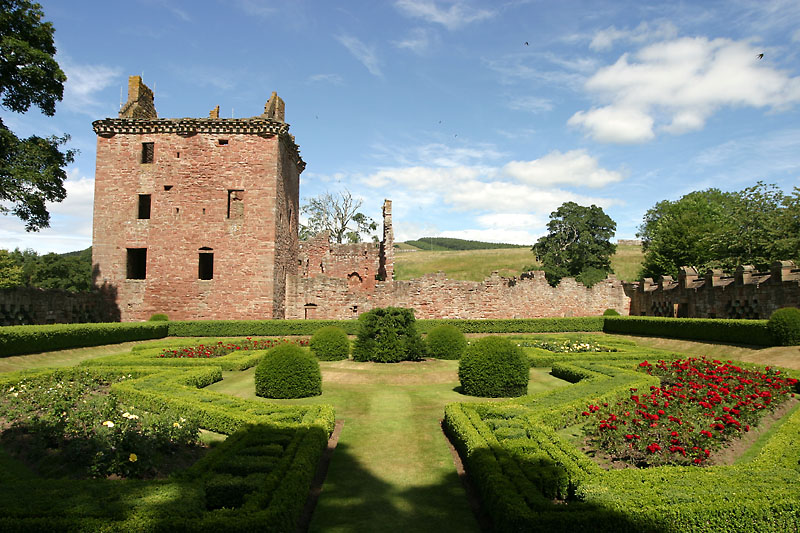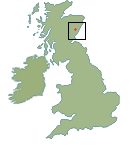Edzell Castle
Lying just one mile to the west of Edzell village, Edzell Castle boasts a Renaissance garden, a unique relic of its kind in Scotland. The structure of Edzell Castle itself lies in ruins which bear witness not to sieges but the cost of maintaining such wealthy surroundings.
The history of Edzell Castle dates to at least the 12th Century when the first castle was built at Edzell by the Abbott family. However, the ruins which you will see here date to the early 16th century when Edzell Castle was the seat of the Lindsay family. The finest castle of its time in Angus, Edzell Castle underwent extensive changes in 1553 which sought to improve the castle's luxuriousnessl. The 9th Earl of Crawford extended the tower by adding the west ranges and providing a new, more elaborate entrance. Other expensive details included intricate decorative corbelling on the roof while the hall on the first floor was heated by a vast fireplace. All in all, Edzell became a show-piece of the Renaissance, elegant, refined and comfortable. So much so that Mary Queen of Scots not only visited Edzell Castle but also held a meeting of her Privy Council here in 1562.
Despite the grandiose refinements made to Edzell Castle in the 16th Century it was not until the early 17th century, that Edzell Castle carved its place in history. It was then that Sir David Lindsay, built a pleasance garden for his second wife. Built in the style of an Italian Renaissance garden, Edzell Castle Garden was an extravagant undertaking on which cost was not spared. The surrounding red walls chequered with spaces for nesting boxes are now picturesquely filled with blue, white and gold flowers recreating the colours of the family's coat of arms. Each wall is further embellished with sculptures depicting the deities connected to Renaissance erudition and virtue.
Pleasant as it is to stroll around in, Edzell Castle Garden is best seen from Edzell Castle Tower. From here you'll get the best view of the parterres which are filled with roses and decorated by beech borders that spell out the family's mottoes. The first "dum spiro spero" or "while I breathe I hope" reflects Sir David's ambitious plans for a garden that would inspire both the senses and the mind. Unfortunately, he never lived to see it in its final state as he died before its completion in 1610. Nevertheless, Edzell Castle garden lived on and provided the family with a continual reminder of their second motto, "endure forte" or "endure firmly". Sir David's refined garden, exotic renovation of Edzell Castle and his expensive tastes left a financial burden from which the family never recovered. A century later, Edzell Castle was sold to settle the outstanding debt and the last of the Lindsay's rode out his days as a stable hand.
In 1715, the Earl of Panmure bought Edzell Castle only to have it forfeited shortly after for his participation in the Jacobite uprisings. The Crown then sold Edzell Castle to the York Building Company who proceeded to strip it for its assets. However, the company also went bankrupt and its creditors tried to regain their losses by using it as a quarry for stone. Edzell Castle finally passed into the care of the state in the 1930's.
Photos of Edzell Castle

Edzell Castle Photos (12)
Location of Edzell Castle




